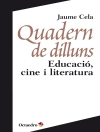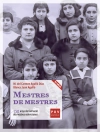This book surveys and examines different approaches and practices that contribute to the changes in mathematics instruction, including (1) innovative approaches that bring direct changes in classroom instructional practices, (2) curriculum reforms that introduce changes in content and requirements in classroom instruction, and (3) approaches in mathematics teacher education that aim to improve teachers’ expertise and practices. It also surveys relevant theory and methodology development in studying and assessing mathematics instruction.
Classroom instruction is commonly seen as one of the key factors contributing to students’ learning of mathematics, but much remains to be understood about teachers’ instructional practices that lead to the development and enactment of effective classroom instruction, and approaches and practices developed and used to transform classroom instruction in different education systems.
Transforming Mathematics Instruction is organized to help readers learn not only from reading individual chapters, but also from reading across chapters and sections to explore broader themes, including:
– Identifying what is important in mathematics for teaching and learning emphasized in different approaches;
– Exploring how students’ learning is considered and facilitated through different approaches and practices;
– Understanding the nature of various approaches that are valued in different systems and cultural contexts;
– Probing culturally valued approaches in identifying and evaluating effective instructional practices.
The book brings new research and insights into multiple approaches and practices for transforming mathematics instruction to the international community of mathematics education, with 25 chapters and four section prefaces contributed by 56 scholars from 10 different education systems. This rich collection is indispensable reading for mathematics educators, researchers, teachereducators, curriculum developers, and graduate students interested in learning about different instructional practices, approaches for instructional transformation, and research in different education systems.
It will help readers to reflect on approaches and practices that are useful for instructional changes in their own education systems, and also inspire them to identify and further explore new areas of research and program development in improving mathematics teaching and learning.
Cuprins
Chapter 1: Transforming mathematics instruction: What do we know and what can we learn from existing approaches and practices? Yeping LI, Texas A&M University, USA; Edward A. SILVER, University of Michigan, USA; Shiqi LI, East China Normal University, China .- Part I: Transforming Mathematics Instruction with a Focus on Changes in Instructional Practice.- Preface: David CLARKE .- Chapter 2: Modelling in mathematics classroom instruction – an innovative approach for transforming mathematics education: Katrin VORHÖLTER, University of Hamburg, Germany; Gabriele KAISER, University of Hamburg, Germany;Rita Borromeo FERRI, Kassel University, Germany .- Chapter 3: Guided reinvention: What is it and how do teachers learn this teaching approach? Michelle STEPHAN, University of North Carolina Charlotte, USA; Diana UNDERWOOD-GREGG, Purdue University Calumet, USA; Erna YACKEL, Purdue University Calumet, USA .- Chapter 4: Challenging mathematics with multiple solution tasks and mathematical investigations in geometry: Roza LEIKIN, University of Haifa, Israel. – Chapter 5: Transforming professional practice in numeracy teaching: Merrilyn GOOS, The University of Queensland, Australia; Vince GEIGER, Australian Catholic University, Australia; Shelley DOLE, The University of Queensland, Australia .- Chapter 6: Exploratory work in the mathematics classroom: João Pedro da PONTE, Instituto de Educação da Universidade de Lisboa, Portugal; Neusa BRANCO, Instituto de Educação da Universidade de Lisboa, Portugal; Marisa QUARESMA, Instituto de Educação da Universidade de Lisboa, Portugal.- Chapter 7: The affordances of using visibly random groups in a mathematics classroom: Peter LILJEDAHL, Simon Fraser University, Canada .- Part II: Transforming Mathematics Instruction with School Curriculum Changes.- Preface: Edward A. SILVER .- Chapter 8: Transforming mathematics education: The role of textbooks andteachers: Koeno GRAVEMEIJER, Eindhoven University of Technology, the Netherlands .- Chapter 9: Opportunities to develop algebraic thinking in elementary grades throughout the school year in the context of mathematics curriculum changes: Hélia OLIVEIRA, University of Lisbon, Portugal; Célia MESTRE, University of Lisbon, Portugal .- Chapter 10: Transformation of Japanese elementary mathematics textbooks: 1958-2012: Tad WATANABE, Kennesaw State University, USA. – Chapter 11: Changes in instructional tasks and their influence on classroom discourse in reformed mathematics classrooms of Chinese primary schools: Yu-Jing NI, The Chinese University of Hong Kong, Hong Kong SAR; Xiaoqing LI, Shen Zhen University, China; Dehui ZHOU, Hong Kong Shue Yan University, Hong Kong SAR; Qiong LI, Beijing Normal University, China .- Chapter 12: Improving classroom instruction in mathematics through exemplary lesson development: A Chinese approach: Rongjin HUANG, Middle Tennessee State University, USA; Yeping LI, Texas A&M University, USA. – Part III: Transforming Mathematics Instruction with Different Approaches in Teacher Education.- Preface: Peter SULLIVAN .- Chapter 13: Facilitating video-based professional development: Planning and orchestrating productive discussions: Hilda BORKO, Stanford University, USA, Jennifer JACOBS, University of Colorado, Boulder, USA, Nanette SEAGO, West Ed, USU, Charmaine MANGRAM, Stanford University, USA.- Chapter 14: Professional development for secondary school mathematics teachers using student work: Some challenges and promising possibilities: Edward A. SILVER, University of Michigan, USA, Heejoo SUH, Michigan State University, USA.- C hapter 15: Cases as a vehicle for developing knowledge needed for teaching: Margaret S. SMITH, University of Pittsburgh, USA. Justin BOYLE, University of New Mexico, USA, Fran ARBAUGH, Pennsylvania State University, USA, Gabriel STYLIANIDES, University of Oxford, UK.- Chapter 16: The process of instructional change: Insights from the problem-solving cycle: Jennifer JACOBS, University of Colorado, Boulder, USA, Karen KOELLNER, City University of New York, USA, Tyrone JOHN, City University of New York, USA, Carolyn KING, City University of New York, USA.- Chapter 17: How classroom instruction was improved in a Teaching Research Group: A case study from Shanghai: Yudong YANG, Shanghai Academy of Educational Sciences, China.- Chapter 18: Pursuing mathematics classroom instruction excellence through teaching contests: Yeping LI, Texas A&M University, USA, Jun LI, East China Normal University, China.- Part IV: Advances in Theory and Methods for Assessing and Studying Mathematics Classroom Instruction.- Preface to Part IV: Norma PRESMEG.- Chapter 19: DNR-based instruction in mathematics: Determinants of a DNR expert’s teaching: Guershon HAREL, University of California, San Diego, USA, Evan FULLER, Montclair State University, USA, Osvaldo SOTO, Patrick Henry High School, USA.- Chapter 20: Unifying complexity in mathematics teaching-learning development: A theory-practice dialectic: Barbara JAWORSKI, Loughborough University, UK.- Chapter 21: The interplay of factors involved in shaping students’ opportunities to learn mathematics: Ruhama EVEN, Weizmann Institute of Science, Israel.- Chapter 22: Methodological considerations in the analysis of classroom interaction in community college trigonometry: Vilma MESA, University of Michigan, USA, Elaine LANDE, University of Michigan, USA.- Chapter 23: Assessing instructional quality in mathematics classrooms through collections of students’ work: Melissa D. BOSTON, Duquesne University, USA.- Chapter 24: Example-generation and example-based reasoning as indicators and catalysts of mathematical and pedagogical understandings: Orit ZASLAVSKY, New York University, USA, Iris ZODIK, Technion – Israel Institute of Technology, Israel.- Part V: Commentary.- Chapter 25: Transforming Research to Transform Mathematics Instruction: Deborah Loewenberg BALL, University of Michigan, USA, Mark HOOVER, University of Michigan, USA.












